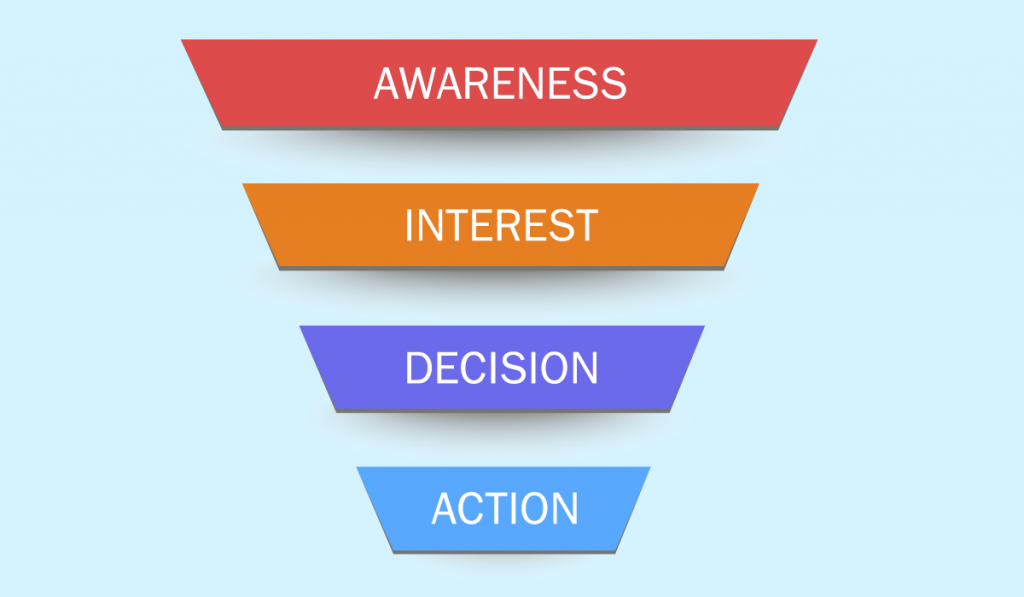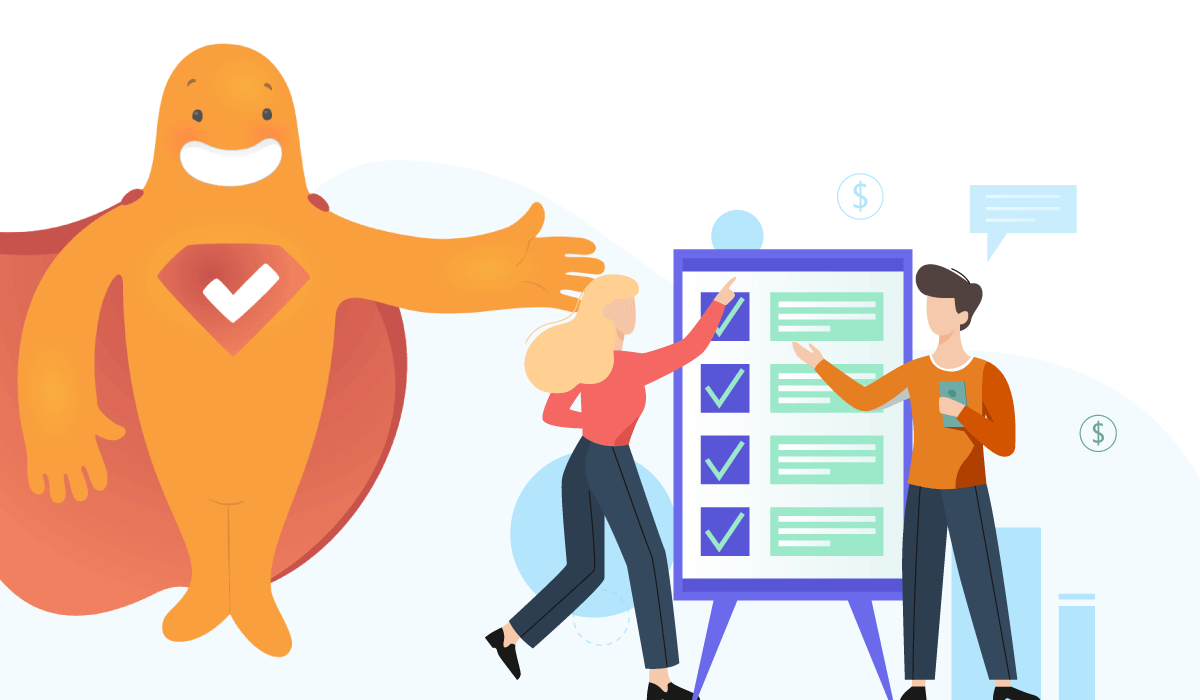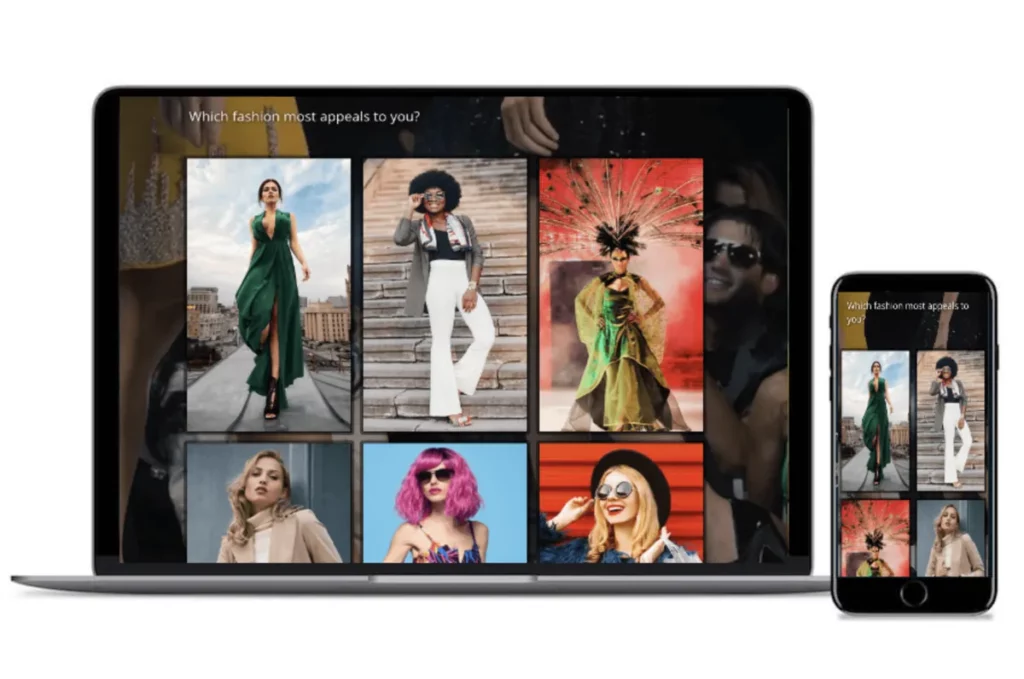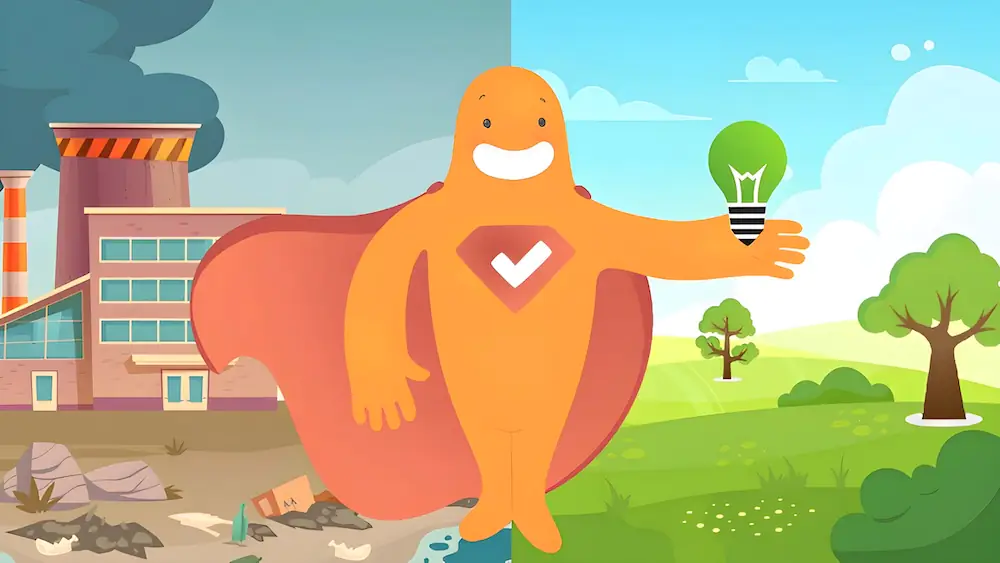Create your customer survey, poll, or questionnaire now!
What is a Sales Funnel?
The sales funnel, also known as a marketing funnel, is the process each of your prospective buyers goes through on their way to becoming a customer. Each stage of the funnel takes the buyer one step closer to making a purchase. These are known as customer journey stages, which begin with someone discovering your product or service, learning more about it, deciding to buy, and then actually making the purchase. Once you understand your own funnel, a well-executed one will define what your business needs to do in order to push prospects to the next stage. So why is this process described as a funnel? Because you will never be able to convert everyone, the process starts out large (the top of the funnel) before narrowing down prospective customers. Eventually, you’re left with only those who have made a purchase (the bottom of the funnel). Of course, the goal is to get as many people at the top of the funnel to the bottom of the funnel! Now, it’s important to understand that not all funnels are created equal. For some products, such as lower-priced consumer goods, a person may go through the funnel in a matter of minutes; it’s just a matter of putting an item on a shelf. For higher-priced items, such as a vehicle, the funnel may be far more complicated, involving advertising, email marketing, sales calls, and more. This will call for more customer relationship management.
So, let’s take a look at the customer lifecycle stages as a prospect moves through the funnel and how you can use surveys to help convert these prospects into customers.
Now, it’s important to understand that not all funnels are created equal. For some products, such as lower-priced consumer goods, a person may go through the funnel in a matter of minutes; it’s just a matter of putting an item on a shelf. For higher-priced items, such as a vehicle, the funnel may be far more complicated, involving advertising, email marketing, sales calls, and more. This will call for more customer relationship management.
So, let’s take a look at the customer lifecycle stages as a prospect moves through the funnel and how you can use surveys to help convert these prospects into customers.
Awareness Stage
The awareness stage is the very top of the sales funnel stages. At this point, companies should be looking to improve the visibility of their products or services to gain attention and recognition (and to start collecting leads). While you should always have your eye on your target audience, it’s okay to cast a wide net at this stage. However, rather than push and promote your brand at this stage, you should instead attempt to share ideas, solutions, or advice. Think of this stage as “wooing” customers. To do this, many companies will create inbound marketing content that people will find online, such as blogs, webinars, social media posts, etc. Of course, you can take things offline too, holding in-person events and such. To use surveys in the awareness stage, it’s important not to be too pushy (a pop-up survey immediately when someone lands on your website, for example, can be considered annoying). So, give users time to peruse your site before asking for feedback. When you do ask, you might inquire as to what brought them to the site, if they’re interested in your solutions, what they like about your company, and then link to other related content to keep them interested.Interest Stage
Okay, so you’ve got their attention. You’ve just moved the prospect down the funnel to the interest, or consideration stage. Your efforts have piqued their curiosity, and now they want to know more about your particular product or service. They’re likely not ready to make a purchase just yet and may have questions, but they’re interested. So, now it’s time to build a relationship with your new lead. You should focus on maintaining a relationship that positions you as a helpful expert. You’ll want to do this by creating a consistent brand voice and message that your target audience can relate to, and sharing it through various content channels. This will keep you top-of-mind and continue to highlight your company as one that can solve a need. At the consideration stage, many companies will offer free trials or subscriptions, discounts, or one-on-one demos, while maintaining their blogging, email campaigns, and social posts. Now, your surveys should focus on what you need to do to capture them as a customer. Even if they don’t bite, their responses can help inform what you need to do to reel in other customers at this stage in the game.Decision Stage
They’re ready to buy! But, will it be from you? At the decision stage, you need to drive things home! Now, it’s less about providing useful educational content and more about promoting your company. This is where you get to shine, letting potential customers know why your product or service is the best, and why they should buy it. Use your surveys at this stage in the customer journey to engage with them, asking questions (based on your product or service) such as “Are you where you want to be in your career?”, “Are you happy with your current service provider”, “Ready for your all-new look?” or “Are you ready to change your life?” Link the survey to a landing page with a listing of your products and services, or even to a live chat where a professional can seal the deal.Action Stage/Retention
It’s crucial to keep your customers. Loyal customers that feed your company and stay long-term help reduce costs and can even boost your marketing efforts (loyal customers often become brand advocates who will recommend your product or service to their friends and family). In fact, customer retention studies show that acquiring a new customer can cost five times more than retaining an existing customer, and that increasing customer retention by 5% can increase profits from 25-95%. Now, you don’t want to irritate them by communicating too much, but a couple of emails a month and a newsletter informing them of what’s new is acceptable and recommended. For these loyal customers, you may also want to offer the occasional discount or deal to let them know you value them. When it comes to surveys at this stage, you might send one out to customers that ask what new products or services you could offer to them. You can also ask about their customer experience so far, and see if there’s any room for improvement. Feedback at this stage is important for making improvements that could attract new customers and ensure current ones don’t go anywhere. And, by asking customers for their input and feedback, they will continue to feel like a vital part of your business. This is also a great time to consider an NPS survey, which you can read about in our blog “What is an NPS Survey and Questions You Should Ask.”Conclusion
Good companies listen to the feedback they receive, but the truly great companies that grow year after year are those that actively ask for feedback. So, during all the customer stages, it’s important to survey customers and potential customers to learn more about them. In doing so, you’ll be able to offer them exactly what they need, understand their frustrations (and make improvements if needed), and turn them into loyal brand advocates. Ready to survey your customers? SurveyLegend makes it easy. Check out our customer satisfaction survey templates here, including customer loyalty surveys and customer satisfaction surveys. Then, start today for free! Do you use customer surveys throughout the sales funnel? Which customer stages do you find most beneficial? Sound off in the comments!Create your customer survey, poll, or questionnaire now!
Frequently Asked Questions (FAQs)
The sales funnel illustrates the process prospective buyers go through on their way to becoming a customer. Each stage of the funnel takes the buyer one step closer to making a purchase.




